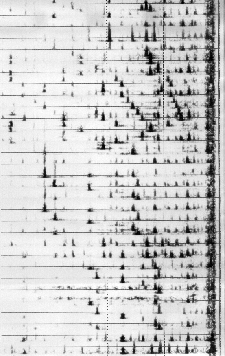Cet article traite de la modélisation d’un des aspects du jeu « en retard » d’Erroll Garner sur lequel les commentaires restaient assez flous. La question de savoir quelle sorte de décalage avait employé Garner demeurait donc d’actualité. D’après nos recherches, on a baptisé la technique modélisée « trompe l’oreille » pour l’illusion acoustique d’ambivalence métrique qu’elle produit, illusion comparable à ce que donne un « trompe l’œil » en peinture.
L’auteur a choisi de détailler la démarche expérimentale qui, des premiers balbutiements au recours à l’analyse sonagraphique, a permis de concevoir le jeu de Garner comme objet.
La mise à jour de cette technique pianistique touche à des questions épistémologiques : comment déconstruire une oreille culturelle (jazz) ? Comment définir l’archétype du style d’un musicien ? Dans quelle mesure savoir et savoir-faire sont-ils comparables ?
—-
This article is about the modelization of one of the aspects of the “desynchronized” playing of Erroll Garner on which the comments were ambiguous. So, the question of what kind of laid back was Garner using remained current. From our research, we have named this technique « trompe oreille » for the acoustic illusion of metric ambivalence this technique gives, illusion analogous to the effect produced by the 3D-like paintings named in french « trompe l’oeil ».
The author has chosen to detail the experimental process that, from the first stammers to the sonagraphic analysis, permitted to conceive Garner’s playing as an object.
The discovery of this pianistic technique concerns epistemological questions: how can we objectize a cultural ear (jazz) ? How to define the archetype of a musician style ? In which way knowledge and know-how can be compared ?

